 W
WThe Mexican Empire was a constitutional monarchy, the first independent government of Mexico and the only former colony of the Spanish Empire to establish a monarchy after independence. It is one of the few modern era, independent monarchies that have existed in the Americas along with the Brazilian Empire and the two Haitian Empires.
 W
WThe First Mexican Republic, known also as the First Federal Republic, was a federated republic, under the Constitution of 1824. It was nation-state officially designated the United Mexican States. The First Mexican Republic lasted from 1824 to 1835, when conservatives under Antonio López de Santa Anna transformed it into a centralized state, the Centralist Republic of Mexico.
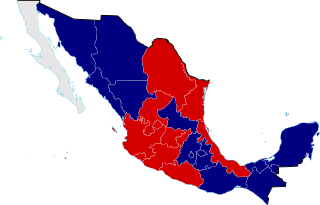 W
WThe War of Reform in Mexico, during the Second Federal Republic of Mexico, was the three-year civil war (1857–1860) between members of the Liberal Party who had taken power in 1855 under the Plan of Ayutla, and members of the Conservative Party resisting the legitimacy of the government and its radical restructuring of Mexican laws, known as La Reforma. The Liberals wanted to eliminate the political, economic, and cultural power of the Catholic church as well as reduce the role of the Mexican Army. Both the Catholic Church and the Army were protected by corporate or institutional privileges (fueros) established in the colonial era. Liberals sought to create a modern nation-state founded on liberal principles. The Conservatives wanted a centralist government, some even a monarchy, with the Church and military keeping their traditional roles and powers, and with landed and merchant elites maintaining their dominance over the majority mixed-race and indigenous populations of Mexico.
 W
WThe Mexican Empire or Second Mexican Empire was the name of Mexico under a constitutional hereditary monarchy declared by a Mexican Assembly of Notables in accordance with the interests of the French Empire, during the Second French intervention in Mexico. Napoleon III of France wanted to establish a monarchist ally in the Americas as a restraint upon the growing power of the United States. Chosen as the Mexican emperor was Austrian Archduke Ferdinand Maximilian, of the House of Habsburg-Lorraine. His wife and empress of Mexico was Belgian princess, Charlotte of the House of Saxe-Coburg and Gotha.
 W
WThe Treaty of Córdoba established Mexican independence from Spain at the conclusion of the Mexican War of Independence. It was signed on August 24, 1821 in Córdoba, Veracruz, Mexico. The signatories were the head of the Army of the Three Guarantees, Agustín de Iturbide, and, acting on behalf of the Spanish government, Jefe Político Superior Juan O'Donojú. The treaty has 17 articles, which developed the proposals of the Plan of Iguala. The Treaty is the first document in which Spanish and Mexican officials accept the liberty of what will become the First Mexican Empire, but it is not today recognized as the foundational moment, since these ideas are often attributed to the Grito de Dolores. The treaty was rejected by the Spanish government. Spain did not recognize Mexico's independence until December 28, 1836.
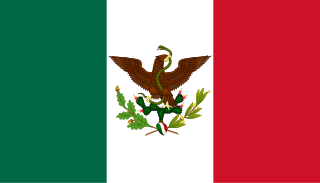 W
WThe Second Federal Republic of Mexico is the name given to the second attempt to achieve a federalist government in Mexico. Officially called the United Mexican States, a federal republic was implemented again on August 22, 1846 when interim president José Mariano Salas issued a decree restoring the 1824 constitution. Like the Mexican Empire, the First Federal Republic and the Centralist Republic it was a chaotic period, marked by political instability that resulted in several internal conflicts. Mexico's loss of the war with the United States saw half the territory Mexico claimed become part of the United States. Even though Antonio López de Santa Anna played a major role in much of this history, he returned to the presidency yet again, selling northern territory coveted by the United States contiguous to territory it just gained in the Treaty of Guadalupe Hidalgo. The sale of the Mesilla Valley was for many the final straw, and liberals promulgated of the Plan of Ayutla, calling for the overthrow of Santa Anna. Santa Anna went into exile and the liberals set about implementing their vision of Mexico.
 W
WThe Federal Constitution of the United Mexican States of 1824 was enacted on October 4 of 1824, after the overthrow of the Mexican Empire of Agustin de Iturbide. In the new constitution, the republic took the name of United Mexican States, and was defined as a representative federal republic, with Catholicism as the official and unique religion. It was replaced by the Federal Constitution of the United Mexican States of 1857.
 W
WIgnacio José de Allende y Unzaga, born Ignacio Allende y Unzaga, was a captain of the Spanish Army in Mexico who came to sympathize with the Mexican independence movement. He attended the secret meetings organized by Josefa Ortiz de Domínguez, where the possibility of an independent New Spain was discussed. He fought along with Miguel Hidalgo y Costilla in the first stage of the struggle, eventually succeeding him in leadership of the rebellion. Allende was captured by Spanish colonial authorities while he was in Coahuila and executed for treason in Chihuahua.
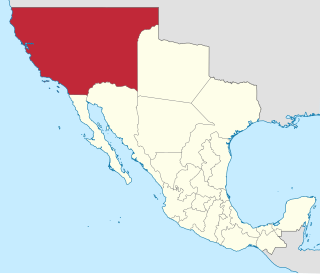 W
WAlta California, also known as Nueva California, among other names, was a province of New Spain, formally established in 1804. Along with the Baja California peninsula, it had previously comprised the province of Las Californias, but was split off into a separate province in 1804. Following the Mexican War of Independence, it became a territory of Mexico in April 1822 and was renamed Alta California in 1824. The claimed territory included all of the modern US states of California, Nevada and Utah, and parts of Arizona, Wyoming, Colorado and New Mexico. In the 1836 Siete Leyes government reorganization, the two Californias were once again combined. That change was undone in 1846, but rendered moot by the U.S. military occupation of California in the Mexican-American War.
 W
WBaja California Territory was a Mexican territory from 1824 to 1931, that encompassed the Baja California Peninsula of present-day northwestern Mexico. It replaced the Baja California Province (1773–1824) of the Spanish colonial Viceroyalty of New Spain, after Mexican independence. Along with Alta California, the two territories were split from the Spanish The Californias region.
 W
WArnaudville is a town in St. Landry and St. Martin parishes in the U.S. state of Louisiana. The population was 1,057 at the 2010 census.
 W
WThe Capture of Monterey by the United States Navy and Marine Corps occurred in 1842. After hearing false news that war had broken out between the United States and Mexico, the commander of the Pacific Squadron Thomas ap Catesby Jones sailed from Lima, Peru with three warships to Monterey, California. The Americans' objective was to take control of the capital city before a suspected British cession could be achieved.
 W
WJosé María Jesús Carbajal (1809–1874) was a Tejano who was rejected by the Anglos after the Battle of San Jacinto and had to leave Texas. He then became a Mexican revolutionary, who opposed the Centralist government installed by Antonio López de Santa Anna. Carbajal was a direct descendant of Andres Hernandez and Juana de Hoyos (1709-?) (m.1729) of the settling Spanish soldier's founders of Villa de Bejar in 1718 and Canary Islands settlers who immigrated to San Antonio, Texas in the 18th Century. As a teenager in San Antonio, he was mentored by Stephen F. Austin and came under the spiritual guidance of Alexander Campbell while attending school in Virginia. He was a surveyor by trade and a politician as a result of historical events. Carbajal married into the influential De Leon family of Victoria, Texas. He called himself "a true Mexican" whose allegiance lay with the people of Mexico. He turned his back on the Republic of Texas after his land and that of many other Tejanos were confiscated by the liberal Rebels. He moved to Mexico, where he conducted guerrilla warfare against Mexican military forces. Carbajal was active in the establishment of the Republic of the Rio Grande and made an unsuccessful attempt at establishing the break-away Republic of Sierra Madre. Indicted twice in the United States for his activities, Carbajal was never convicted in a court of law. He was an early supporter of Benito Juárez and was appointed the military governor of Tamaulipas.
 W
WCharlotte of Belgium was a Belgian princess who became Empress of Mexico when her husband accepted the Imperial Throne of Mexico and reigned as Maximilian I of Mexico.
 W
WThe Caste War of Yucatán (1847–1901) began with the revolt of native Maya people of the Yucatán Peninsula against the European-descended population, called Yucatecos. The latter had long held political and economic control of the region. A lengthy war ensued between the Yucateco forces in the northwest of the Yucatán and the independent Maya in the southeast. There was regular raiding between them.
 W
WChan Santa Cruz was the name of a shrine in Mexico of the Maya Cruzob religious movement. It was also the name of the town that developed around it and, less formally, the late 19th-century indigenous Maya state, in what is now the Mexican state of Quintana Roo, of which it was the main center. This area was the center of the Caste War of Yucatán beginning in 1847, by which the Maya established some autonomous areas on the east side of the Yucatán Peninsula. The main conflict ended in 1915, when they agreed to recognize the Mexican government, but the last time that Mexican troops took action against a Maya village in this area was in 1933.
 W
WCoahuila y Tejas was one of the constituent states of the newly established United Mexican States under its 1824 Constitution.
 W
WThe Comanche–Mexico Wars was the Mexican theater of the Comanche Wars, a series of conflicts from 1821 to 1870. There were large-scale raids into northern Mexico by the Comanche and their Kiowa and Kiowa Apache allies, which left thousands of people dead. The Comanche raids were sparked by the declining military capability of Mexico during the turbulent years after it gained independence in 1821, as well as a large and growing market in the United States for stolen Mexican horses and cattle.
 W
WThe Constitution of Apatzingán, formally Decreto Constitucional para la Libertad de la América Mexicana, was promulgated on October 22, 1814 by the Congress of Anahuac gathered in the city of Apatzingán because of the persecution of the troops of Félix María Calleja. The constitution was valid for insurgent forces in the territories that it controlled during the Mexican War of Independence.
 W
WThe Political Constitution of the State of Yucatán is the constitution which legally governs the free and sovereign state of Yucatán, one of 31 states with the Federal District comprise the 32 federative entities of the United Mexican States. It was drafted by the Constituent Congress of State, chaired by Héctor Victoria Aguilar in 1918 and promulgated by General Salvador Alvarado, pre-constitutional governor of Yucatán. The most important reforms were made in 1938, although its text has been revised and partially renovated over the 20th century and continues to be reformed so far.
 W
WThe Cry of Dolores occurred in Dolores, Mexico, on 16 September 1810, when Roman Catholic priest Miguel Hidalgo y Costilla rang his church bell and gave the call to arms that triggered the Mexican War of Independence.
 W
WThe Declaration of Independence of the Mexican Empire is the document by which the Mexican Empire declared independence from the Spanish Empire. This founding document of the Mexican nation was drafted in the National Palace in Mexico City on September 28, 1821, by Juan José Espinosa de los Monteros, secretary of the Provisional Governmental Board.
 W
WThe Federal Constitution of the United Mexican States of 1857 often called simply the Constitution of 1857 is the liberal constitution drafted by 1857 Constituent Congress of Mexico during the presidency of Ignacio Comonfort. It was ratified on February 5, 1857, establishing individual rights such as freedom of speech; freedom of conscience; freedom of the press; freedom of assembly; and the right to bear arms. It also reaffirmed the abolition of slavery, eliminated debtor prison, and eliminated all forms of cruel and unusual punishment, including the death penalty. It was designed to guarantee a weak central government through federalism, created a strong legislature and an independent judiciary, and a weak executive in order to prevent dictatorship. Liberal ideology of the centrality of private property and suspicion of ownership of property, that is, indigenous communities and the Catholic Church saw the Ley Lerdo incorporated into the constitution.
 W
WThe Gadsden Purchase, is a 29,670-square-mile (76,800 km2) region of present-day southern Arizona and southwestern New Mexico that the United States acquired from Mexico by the Treaty of Mesilla, which took effect on June 8, 1854. The purchase included lands south of the Gila River and west of the Rio Grande where the U.S. wanted to build a transcontinental railroad along a deep southern route, which the Southern Pacific Railroad later completed in 1881–1883. The purchase also aimed to resolve other border issues.
 W
WThe Goliad Campaign was the 1836 Mexican offensive to retake the Texas Gulf Coast during the Texas Revolution. Mexican troops under the command of General José de Urrea defeated rebellious immigrants to the Mexican province of Texas, known as Texians, in a series of clashes in February and March.
 W
WAna María Josefa Ramona Juana Nepomucena Marcelina Huarte y Muñiz was the first Empress of Mexico. She was the wife of Emperor Agustín de Iturbide of Mexico. Her father was the provincial intendant Isidro Huarte and her mother was the noblewoman Manuela Muñiz y Sanchez de Tagle, descendant of the Marquis of Altamira.
 W
WThere were three Imperial Orders of the Mexican Empire, created to reward Heads of state and prominent people during the two periods of the Mexican Empire – the Imperial Order of Guadalupe, the Imperial Order of the Mexican Eagle, and the Imperial Order of Saint Charles.
 W
WSalvador Agustín Francisco de Paula de Iturbide y Marzán was the grandson of Agustín de Iturbide, the first emperor of independent Mexico, and his consort Empress Ana María. He became the adopted son, along with his cousin Agustín de Iturbide y Green, of Mexico's only other royal heads of state—Emperor Maximilian I and Empress Carlota of Mexico.
 W
WAgustín Cosme Damián de Iturbide y Arámburu, also known as Augustine of Mexico, was a Mexican army general and politician. During the Mexican War of Independence, he built a successful political and military coalition that took control in Mexico City on 27 September 1821, decisively gaining independence for Mexico. After securing the secession of Mexico from Spain, Iturbide was proclaimed president of the Regency in 1821; a year later, he was announced as the Constitutional Emperor of Mexico, reigning briefly from 19 May 1822 to 19 March 1823. In May 1823 he went into exile in Europe. He returned to Mexico in July 1824, when he was arrested and executed. He is the designer of the Mexican flag.
 W
WAgustín de Iturbide y Green was the grandson of Agustín de Iturbide, the first emperor of independent Mexico, and his consort Ana María Huarte.
 W
WMaximilian I was an Austrian archduke who reigned as the only Emperor of the Second Mexican Empire from 10 April 1864 until his execution on 19 June 1867. A younger brother of Emperor Franz Joseph I of Austria, Maximilian had a distinguished career as commander-in-chief of the Imperial Austrian Navy.
 W
WMaría Josefa Crescencia Ortíz Téllez–Girón, popularly known as Doña Josefa Ortiz de Domínguez or La Corregidora was an insurgent and supporter of the Mexican War of Independence, which fought for independence against Spain, in the early 19th century. She was married to Miguel Domínguez, corregidor of the city of Querétaro, hence her nickname.
 W
WThe Pastry War, also known as the First French intervention in Mexico or the First Franco-Mexican War (1838–1839), began in November 1838 with the naval blockade of some Mexican ports and the capture of the fortress of San Juan de Ulúa in Veracruz by French forces sent by King Louis-Philippe. It ended several months later in March 1839 with a British-brokered peace. The intervention followed many claims by French nationals of losses due to unrest in Mexico. This incident, the first and lesser of Mexico's two 19th-century wars with France, preceded the French invasion of 1861–67 which supported the short reign of Emperor Maximilian I of Mexico whom the Mexicans executed by firing squad at the end of that later conflict.
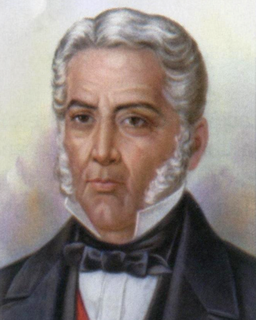 W
WThe Plan of Ayutla was the 1854 written plan aimed at removing conservative, centralist President Antonio López de Santa Anna from control of Mexico during the Second Federal Republic of Mexico period. Initially, it seemed little different than other political plans of the era, but it is considered to be the first act of the Liberal Reform in Mexico. It was the catalyst for revolts in many parts of Mexico, which led to the resignation of Santa Anna from the presidency, never to vie for office again. The next Presidents of Mexico were the liberals, Juan Álvarez, Ignacio Comonfort, and Benito Juárez. The new regime would then proclaim the 1857 Mexican Constitution, which implemented a variety of liberal reforms.
 W
WThe Plan of Iguala, also known as The Plan of the Three Guarantees or Act of Independence of North America, was a revolutionary proclamation promulgated on 24 February 1821, in the final stage of the Mexican War of Independence from Spain. The Plan stated that Mexico was to become a constitutional monarchy, whose sole official religion would be Roman Catholicism, in which the Peninsulares and Creoles of Mexico would enjoy equal political and social rights. It took its name from the city of Iguala in the modern-day state of Guerrero.
 W
WPlan of Tacubaya was issued by conservative General Félix Zuloaga on 17 December 1857 in Tacubaya against the radical liberal Constitution of 1857 that among other provisions abolished special privileges (fueros) of the Catholic Church and the army. President Ignacio Comonfort, a moderate liberal, joined with Zuloaga, commander of the garrison in the capital, and closed congress, which had been elected under the new constitution. Comonfort failed to create a moderate regime and undermined his support with liberals with his repudiation of the new constitution and the congress. Zuloaga then repudiated Comonfort on 11 January 1858, which led to a three-year civil war between conservatives and liberals.
 W
WAndrés Eligio Quintana Roo was a Mexican liberal politician, lawyer, and author. He was the husband of fellow freedom fighter Leona Vicario.
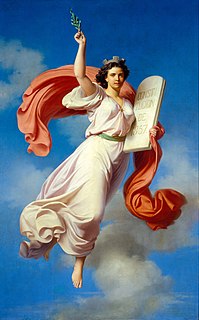 W
WThe Reform laws were a set of anticlerical laws enacted in Mexico between 1855 and 1863, during the governments of Juan Alvarez, Ignacio Comonfort and Benito Juárez that were intended to limit the privileges (fueros) of the Roman Catholic Church and the military. The laws also limited the ability of Catholic Church and indigenous communities from collectively holding land. The liberal government sought the revenues from the disentailment of church property, which could fund the civil war against Mexican conservatives and to broaden the base of property ownership in Mexico and encouraging private enterprise. Several of them were raised to constitutional status by the constituent Congress that drafted the liberal Constitution of 1857. Although the laws had a major impact on the Catholic Church in Mexico, liberal proponents were not opposed to the church as a spiritual institution, but rather sought a secular state and a society not dominated by religion.
 W
WThe Republic of Sonora was a short-lived, unrecognized federal republic ruled by filibuster William Walker in 1854. It was based in Baja California and also claimed Sonora. Walker's exploits generated interest back in San Francisco, where bonds for the Republic of Sonora were sold, and its flag was even raised in places. His enterprise, however, suffered from a lack of supplies and discontent from within; resistance by the Mexican government quickly forced Walker to retreat.
 W
WThe Republic of the Rio Grande was an independent nation that insurgents fighting against the Centralist Republic of Mexico sought to establish in northern Mexico. The Republic of the Rio Grande was just one of a series of independence movements in Mexico under the unitary government dominated by Santa Anna, including the Republic of Texas, the Republic of Zacatecas, and the Republic of Yucatán. The rebellion lasted from 17 January to 6 November 1840.
 W
WThe Plan of Ayutla was the 1854 written plan aimed at removing conservative, centralist President Antonio López de Santa Anna from control of Mexico during the Second Federal Republic of Mexico period. Initially, it seemed little different than other political plans of the era, but it is considered to be the first act of the Liberal Reform in Mexico. It was the catalyst for revolts in many parts of Mexico, which led to the resignation of Santa Anna from the presidency, never to vie for office again. The next Presidents of Mexico were the liberals, Juan Álvarez, Ignacio Comonfort, and Benito Juárez. The new regime would then proclaim the 1857 Mexican Constitution, which implemented a variety of liberal reforms.
 W
WThe flag of the Republic of the Rio Grande was used in 1840, during 283 days from January 17 to November 6, as long as the republic existed. This country was formed by the northeastern Mexican states of Coahuila, Nuevo León, and Tamaulipas. The flag was no longer used following the defeat of the Republic of the Rio Grande by Mexican troops.
 W
WManuel Robles Pezuela. He was unconstitutional provisional President of Mexico from 1858 to 1859 on the conservative side in the Mexican War of the Reform, serving by appointment of a military junta in opposition to the constitutional President Benito Juárez, who was the head of the liberal party.
 W
WThe Battle of San Jacinto, fought on April 21, 1836, in present-day Houston, Texas, was the decisive battle of the Texas Revolution. Led by General Samuel Houston, the Texan Army engaged and defeated General Antonio López de Santa Anna's Mexican army in a fight that lasted just 18 minutes. A detailed, first-hand account of the battle was written by General Houston from the headquarters of the Texan Army in San Jacinto on April 25, 1836. Numerous secondary analyses and interpretations have followed.
 W
WAntonio de Padua María Severino López de Santa Anna y Pérez de Lebrón, usually known as Santa Anna or López de Santa Anna, was a Mexican politician and general. His influence on post-independence Mexican politics and government in the first half of the nineteenth century is such that historians often refer to it as the "Age of Santa Anna." He was called "the Man of Destiny" who "loomed over his time like a melodramatic colossus, the uncrowned monarch." Santa Anna's military and political career was a series of reversals. He first opposed Mexican independence from Spain, but then fought in support of it. He backed the monarchy of Mexican Empire, then revolted against the emperor. He "represents the stereotypical caudillo in Mexican history". Lucas Alamán writes that "the history of Mexico since 1822 might accurately be called the history of Santa Anna's revolutions. His name plays a major role in all the political events of the country and its destiny has become intertwined with his."
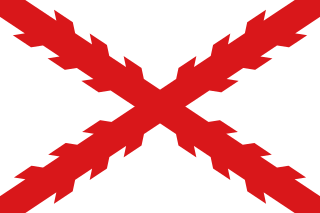 W
WSanta Fe de Nuevo México was a Kingdom of the Spanish Empire and New Spain, and later a territory of independent Mexico. The first capital was San Juan de los Caballeros from 1598 until 1610, and from 1610 onward the capital was La Villa Real de la Santa Fe de San Francisco de Asís. The name "New Mexico", the capital in Santa Fe, the government building, militia or citizen-soldiers (vecinos), and rule of law were retained when the New Mexico Territory, later the U.S. State of New Mexico, became a part of the United States. The New Mexican citizenry, primarily consisting of Hispano, Pueblo, Navajo, Apache, and Comanche peoples, became citizens of the United States as a result of the Treaty of Guadalupe Hidalgo.
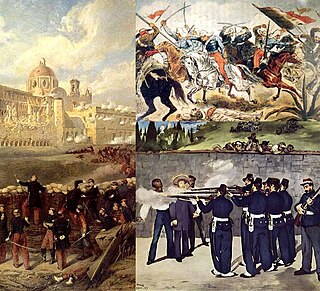 W
WThe Second French Intervention in Mexico, also known as the Second Franco-Mexican War and the Mexican Adventure, was an invasion of Mexico, launched in late 1861, by the Second French Empire (1852–1870). Initially supported by the United Kingdom and Spain, the French intervention in Mexico was a consequence of Mexican President Benito Juárez's imposition of a two-year moratorium of loan-interest payments from July 1861 to French, British, and Spanish creditors. To extend the influence of Imperial France, Napoleon III instigated the intervention in Mexico by claiming that the military adventure was a foreign policy commitment to free trade. The establishment of a European-derived monarchy in Mexico would ensure European access to Mexican resources, particularly French access to Mexican silver. To realize his ambitions without interference from other European nations, Napoleon III of France entered into a coalition with the United Kingdom and Spain.
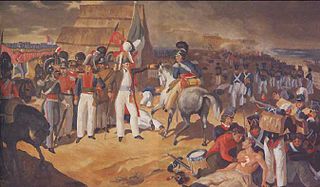 W
WThe Spanish attempts to reconquer Mexico were an effort by the Spanish government to regain possession of its former colony of New Spain, resulting in episodes of war comprised in clashes between the newly born Mexican nation and Spain. The designation mainly covers two periods: the first attempts occurred from 1821 to 1825 and involved the defense of Mexico's territorial waters, while the second period had two stages, including the Mexican expansion plan to take the Spanish-held island of Cuba between 1826 and 1828 and the 1829 expedition of Spanish General Isidro Barradas, which landed on Mexican soil with the object of reconquering Mexican territory. Although the Spanish never regained control of the country, they damaged the fledgling Mexican economy.
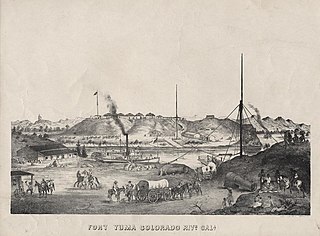 W
WSteamboats on the Colorado River operated from the river mouth at the Colorado River Delta on the Gulf of California in Mexico, up to the Virgin River on the Lower Colorado River Valley in the Southwestern United States from 1852 until 1909, when the construction of the Laguna Dam was completed. The shallow draft paddle steamers were found to be the most economical way to ship goods between the Pacific Ocean ports and settlements and mines along the lower river, putting in at landings in Sonora state, Baja California Territory, California state, Arizona Territory, New Mexico Territory, and Nevada state. They remained the primary means of transportation of freight until the advent of the more economical railroads began cutting away at their business from 1878 when the first line entered Arizona Territory.
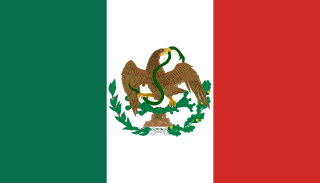 W
WThe Supreme Executive Power was the Provisional Government of Mexico that governed between the fall of the First Mexican Empire in April, 1823 and the election of the first Mexican President, Guadalupe Victoria in October 1824. After Emperor Iturbide abdicated, the sovereignty of the nation passed over to congress which appointed a triumvirate, made up of Guadalupe Victoria, Pedro Celestino Negrete, and Nicolas Bravo, to serve as the executive, while a new constitution was being written.
 W
WThe Territories of Mexico are part of the history of 19th and 20th century independent Mexico. The country created territories (territorios) for areas too lightly populated to be states, or for political reasons.
 W
WMexican Texas is the historiographical name used to refer to the era of Texan history between 1821 and 1836, when it was part of Mexico. Mexico gained independence in 1821 after winning its war against Spain, which began in 1810. Initially, Mexican Texas operated similarly to Spanish Texas. Ratification of the 1824 Constitution of Mexico created a federal structure, and the province of Tejas was joined with the province of Coahuila to form the state of Coahuila y Tejas.
 W
WMaría de la Soledad Leona Camila Vicario Fernández de San Salvador, best known as Leona Vicario, was one of the most prominent figures of the Mexican War of Independence. She was dedicated to informing insurgents of movements in her home Mexico City, the capital of the viceroyalty. She was a member of Los Guadalupes, one of the earliest independence movements in New Spain. She financed the rebellion with her large fortune. She was one of the first female journalists in Mexico. Driven by strong feminist beliefs, she took many risks and sacrificed much wealth in the name of liberation.
 W
WGuadalupe Victoria, born José Miguel Ramón Adaucto Fernández y Félix, was a Mexican general and political leader who fought for independence against the Spanish Empire in the Mexican War of Independence. He was a deputy in the Mexican Chamber of Deputies for Durango and a member of the Supreme Executive Power following the downfall of the First Mexican Empire. After the adoption of the Constitution of 1824, Victoria was elected as the first President of the United Mexican States.
 W
WIgnacio Zaragoza Seguín was a Mexican general and politician. He led the Mexican army that defeated invading French forces at the Battle of Puebla on May 5, 1862.
 W
WThe Zócalo or Plaza del Zócalo is the common name of the main square in central Mexico City. Prior to the colonial period, it was the main ceremonial center in the Aztec city of Tenochtitlan. The plaza used to be known simply as the "Main Square" or "Arms Square", and today its formal name is Plaza de la Constitución. This name does not come from any of the Mexican constitutions that have governed the country but rather from the Cádiz Constitution, which was signed in Spain in the year 1812. Even so, it is almost always called the Zócalo today. Plans were made to erect a column as a monument to Independence, but only the base, or zócalo, was built. The plinth was buried long ago, but the name has lived on. Many other Mexican towns and cities, such as Oaxaca, Mérida, and Guadalajara, have adopted the word zócalo to refer to their main plazas, but not all.